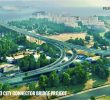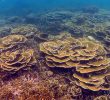Through wildlife and eagle habitat protection, the Municipal Environmental and Natural Resources Office is optimistic that deforestation will be controlled in their municipality.
By DANILDA L. FUSILERO
Davao Today
ARAKAN VALLEY, Cotabato, Philippines — This interior municipality that sits in the borders of Davao City and the provinces of Cotabato and Bukidnon, is up to arrest the denudation of their remaining forests.
And it takes the Philippine Eagle (Scientific name: Pithecophaga jefferyi) as the centerpiece for its environmental conservation efforts.
“The protection of the Philippine Eagle’s habitat is one of the major conservation issues that we discussed,” Jimmy Montero, Environmental Management Specialist of the Municipal Environmental and Natural Resources Office (Menro), told Davao Today.
Arakan held an environmental summit early this month to formulate the Arakan Conservation Framework. It was participated by various government and non-government groups.
“This is to ensure consistency in the implementation rather than duplication of initiatives among implementers of environmental projects in the municipality,” said Montero.
Part of the town’s efforts is its partnership with the Philippine Eagle Foundation (PEF) in Davao City.
A Memorandum of Agreement (MOA) was recently-signed between the two, with the PEF committing to deliver financial, technical and manpower support under its Upscaling Forest Restoration project in Arakan town.
The MOA stated that Arakan forests have reduced four percent of its total land area, mainly because of indiscriminate logging in the past years.
After years of cutting down trees, the areas were subjected to land conversion, mostly for plantation crops. Slash-and-burn farming further cleared the remaining second-growth forests.
The MOA also noted an increase in the frequency of “hostile wildlife-human encounters” which exposed endangered wildlife species to greater risk of extinction.
Through wildlife and eagle habitat protection, Menro is optimistic that deforestation will be controlled in their municipality.
A pair of Philippine Eagles has a habitat requirement of 25 to 50 square miles of forests. This range is also required for them to raise a chick, accounts of various conservation groups revealed. Moreover, eagles need multi-tiered elevation areas of up to 1,800 meters above sea level to freely soar and glide.
It is a bird of prey endemic to the forests in the country and is among the rarest, largest and most-powerful birds in the world. As the country’s national bird, killing an eagle is punishable under the law with 12-year imprisonment and heavy fines.
Known as banog in Arakan, the eagle was first reported to be endemic in the forests of eastern part of Luzon, Samar, Leyte and Mindanao. However, recent publications showed that Philippine Eagles are also sighted in other parts of the country with remaining forests like Palawan. With the presence of a required wild habitat, eagles
can live from 30 to 60 years.
In 2008, the International Union for the Conservation of Nature (IUCN) categorized the Philippine Eagle as critically-endangered. It said that although there were no actual counts of its population, continued destruction of its natural forest habitat threatened the survival of the remaining pairs of eagle in the wild. IUCN identified logging, expanding agriculture and mining of the eagle’s forest habitat as major causes of its dwindling population.
In Arakan, the Philippine Eagle was first sighted in the forests of Mt. Sinaka in the early ‘90s. In 1995, an eagle’s nest was found and years later, a female eagle was caught by a farmer and brought to PEF.
This year, Arakan’s Menro documented two pairs of eagles in the forest ranges of Sinaka, Mahuson and Kimamulig mountains.
Before the entry of logging concessions in the ‘70s, Arakan (formerly part of Magpet town) was once a thickly-forested mountain range. Its aggregate grassland area of nearly 38,000 hectares concluded that Arakan is a logged-over municipality, based on the 2008 North Cotabato Socio-Economic Profile.
To date, the municipality’s forest cover is concentrated in the mountain ranges of Sinaka, Kabiku, Mahuson and Kimamulig.
These mountain ranges were declared as Arakan’s forest reserve and wildlife sanctuary in 1994 though the Municipal Ordinance 12. The local government’s Bantay Kalikasan Council (BKC) was also institutionalized through Municipal Ordinance 335 in 2010.
BKC serves as the Bantay Gubat (Forest Guard), doing periodic patrolling and documentation activities across the town’s key biodiversity areas. The local government also launched the Conservation-Protection-Rehabilitation of Mt. Sinaka to strengthen the participation of local communities in the forest conservation initiatives.
In Cotabato province, the mountainous Arakan ranks fourth in terms of total land area, with 56,950 hectares. Aside from the flora and fauna species endemic to the place, Arakan is also the home of ethnic tribes belonging to Manobo-Kulamanon and Manobo-Tinananon.
In 2010, the late Arakan Mayor Gerardo Tuble was quoted as saying that the Mt. Sinaka ranges are continually under threat by “unscrupulous” human activities, including cutting of trees. Logged-over areas of Mt. Sinaka were also subjected to conversion for oil palm and banana plantations.
Meanwhile, several environmental conservation projects, mostly with foreign funding are being implemented in Arakan. Menro’s Montero said these projects helped them in their efforts to protect and conserve Arakan’s remaining forests and bird sanctuary. (Danilda L. Fusilero/davaotoday.com)
World








